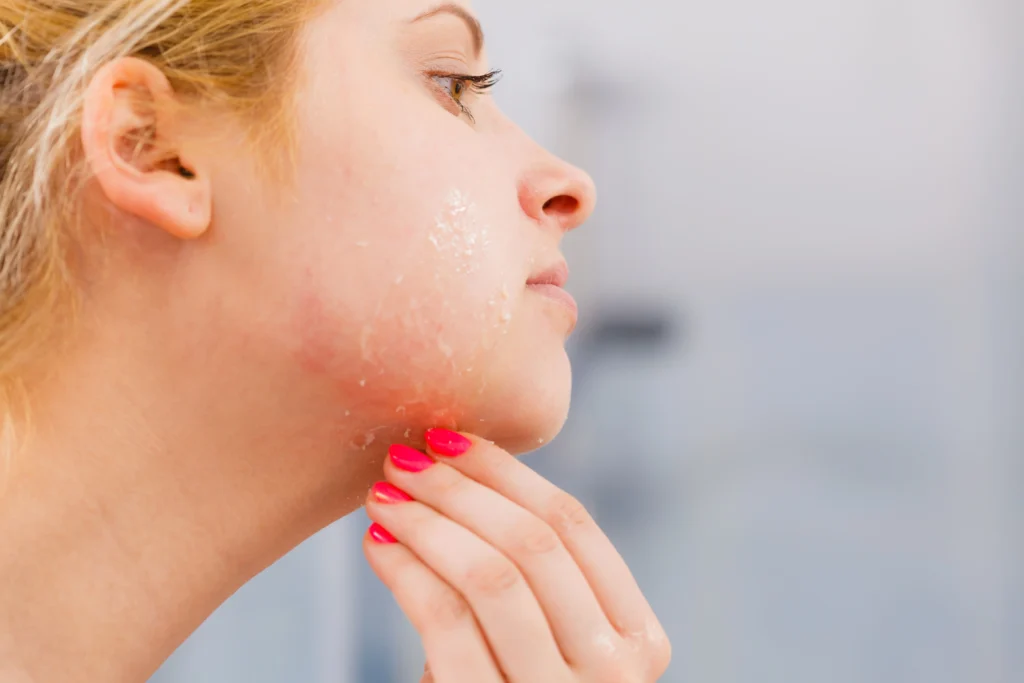
Caring for oily yet dehydrated skin can be a tricky balancing act. You might find yourself struggling with excess oil production whilst simultaneously experiencing dryness and flakiness. This seemingly contradictory skin condition requires a tailored approach to achieve a radiant complexion.
Knowing the unique characteristics of oily-dehydrated skin is essential for developing an effective skincare routine. When you address both the overproduction of sebum and the lack of water content in your skin, you can restore balance and improve your skin’s health and appearance.
With the right combination of products and techniques, you can tackle both issues and achieve the goal of glowing, comfortable skin!
In this article, we’ll discuss several recommendations for establishing an effective oily-dehydrated skin routine that aims to restore your skin’s healthy balance.
Key Takeaways
- Oily dehydrated skin is characterized by excess oil production and dehydration, leading to a shiny T-zone, tightness, dullness, and breakouts.
- Factors contributing to this condition include genetics, hormones, environment, and ageing.
- Managing oily dehydrated skin requires hydration without exacerbating oiliness, using ingredients like humectants, niacinamide, and antioxidants.
- A proper skincare routine should include gentle cleansers, hydrating toners, lightweight moisturisers, and broad-spectrum sunscreen.
- Lifestyle factors such as staying hydrated, eating a balanced diet, managing stress, and getting quality sleep are also important for managing oily-dehydrated skin.
How to Spot Oily Yet Dehydrated Skin
Recognising oily-dehydrated skin can be tricky, as it often presents conflicting symptoms.
You might notice an excessively shiny T-zone (forehead, nose, and chin) while simultaneously experiencing a tight, stretched feeling across your face.
This paradoxical combination is a hallmark of this unique skin condition. Here are other telltale signs to look out for:
- Excessive oil production, especially in the T-zone.
- A tight or stretched sensation after cleansing.
- Dull, lacklustre complexion despite oily appearance.
- More prominent fine lines and wrinkles.
- Persistent breakouts.
- Enlarged pores may also be visible, particularly in oily areas.
While these symptoms might seem contradictory, they stem from your skin’s attempt to compensate for a lack of hydration by overproducing oil.
To determine if you have oily-dehydrated skin, gently pinch a small area of your cheek. If it doesn’t spring back immediately and fine lines appear, your skin likely lacks hydration. This simple test can help differentiate between truly oily skin and oily-dehydrated skin.
Remember, oily-dehydrated skin is distinct from combination skin, though they may share some similarities. The key difference lies in the underlying dehydration present throughout the face, not just in specific areas.
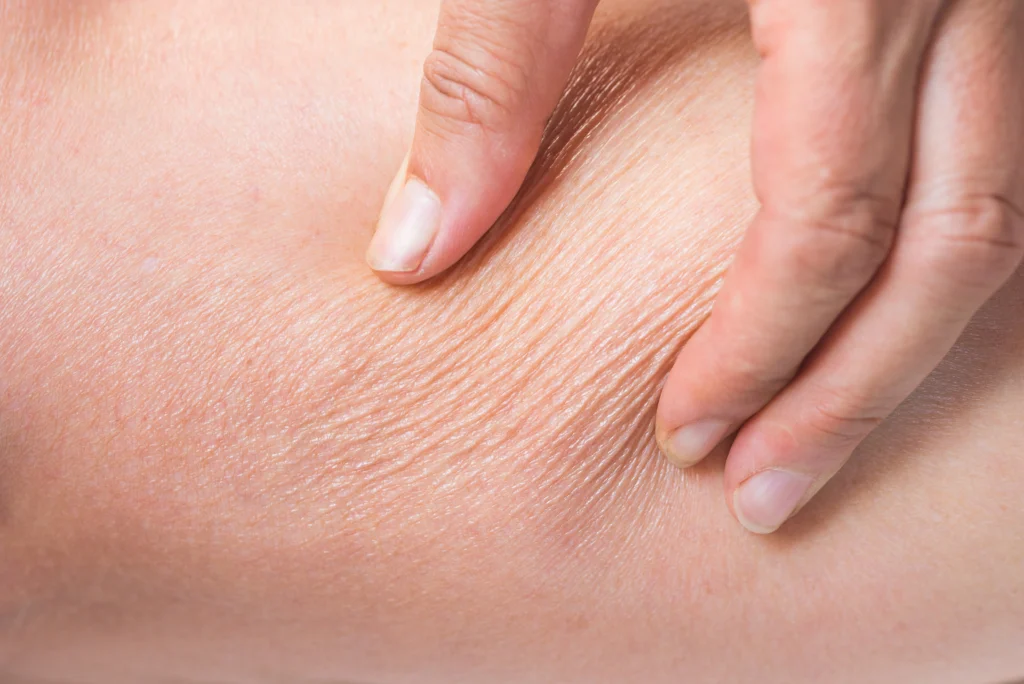
Factors Contributing to Oily-Dehydrated Skin
Recognising the signs of oily-dehydrated skin is important, but understanding the factors that contribute to this condition is equally important.
Your skin can be both oily and dehydrated due to various factors. As you age, your skin may produce less oil, potentially compromising the skin barrier and leading to dehydration. Paradoxically, some individuals might still experience excessive oil production, resulting in a combination of oiliness and dehydration.
Your genetic makeup plays a significant role in determining your skin type. If you have larger sebaceous glands, you may produce more oil, which doesn’t necessarily hydrate your skin effectively.
This can create a paradoxical situation where your skin appears oily on the surface but lacks proper hydration underneath.
Your skin type is important in understanding oily-dehydrated skin because:
- Dry skin may have an impaired skin barrier.
- Oily skin is prone to excess sebum production.
Both can lead to dehydration if not properly managed.
Other factors can trigger your skin to produce excess oil, exacerbating the appearance of oiliness while potentially masking underlying dehydration. Hormonal changes (such as puberty, menstruation, or menopause) can cause sebaceous glands to become overactive, leading to increased oil production. Stress is another significant trigger, as it can stimulate the release of hormones that contribute to oily skin. Environmental conditions, particularly humidity and heat, can also play a role by causing your skin to sweat more, mixing with the excess oil and potentially clogging pores.
To effectively manage oily-dehydrated skin, here’s a short overview of what your routine should look like:
- Protect your skin from environmental stressors
- Use gentle, non-stripping cleansers
- Apply lightweight, hydrating moisturisers
- Incorporate hydrating serums with ingredients like hyaluronic acid
Key Moisturising Ingredients for Oily-Dehydrated Skin
Oily-dehydrated skin requires a delicate balance of hydration without exacerbating excess sebum production. The key to managing this skin type lies in incorporating the right ingredients that can effectively hydrate while keeping oiliness in check.
Humectants are a crucial component to look for in your skincare products. Hyaluronic acid, in particular, is a powerful moisture-binding ingredient that can deeply hydrate the skin without leaving a greasy residue. This humectant works by attracting and retaining water, helping to plump up the skin and reduce the appearance of fine lines and dehydration-related concerns.
In addition to hyaluronic acid, other humectants like glycerin and aloe vera can effectively hydrate oily dehydrated skin without feeling heavy or greasy. Non-comedogenic options such as squalane, can also provide hydration without clogging pores or exacerbating oiliness.
For particularly dry areas, rich emollients like shea butter can offer targeted nourishment and protection.
Another essential ingredient to consider is niacinamide, a form of vitamin B3. This multitasking powerhouse not only improves hydration but also helps regulate sebum production, making it an ideal choice for oily-dehydrated skin.
Antioxidants, such as vitamin C and green tea extract, are also valuable additions to your skincare regimen. These ingredients help protect the skin from environmental stressors, which can contribute to dehydration and excess oil production. Antioxidants can also help brighten and even out skin tone, promoting a more balanced and healthy-looking complexion.
When it comes to consistency, opt for lightweight, water-based moisturisers, as they won’t clog pores or exacerbate oiliness.
Skincare Routine for Oily-Dehydrated Complexions
Now that we understand the various factors contributing to oily-dehydrated skin, let’s explore how to adapt your skincare routine to address this unique challenge.
1. Cleanse Your Skin
To manage oily and dehydrated skin, proper cleansing is a must!
Choose a gentle, water-based cleanser that removes excess oil without stripping away natural moisture. Cleanse twice daily, in the morning and evening, to maintain skin balance.
A milky cleanser can be an excellent option as it contains hydrating ingredients like aloe vera or glycerin that cleanse whilst moisturising.
When cleansing remember to:
- Use lukewarm water
- Gently massage in circular motions
- Avoid harsh scrubbing
- Rinse thoroughly
Regular use of a gentle cleanser helps control oil production and keeps your skin adequately hydrated.
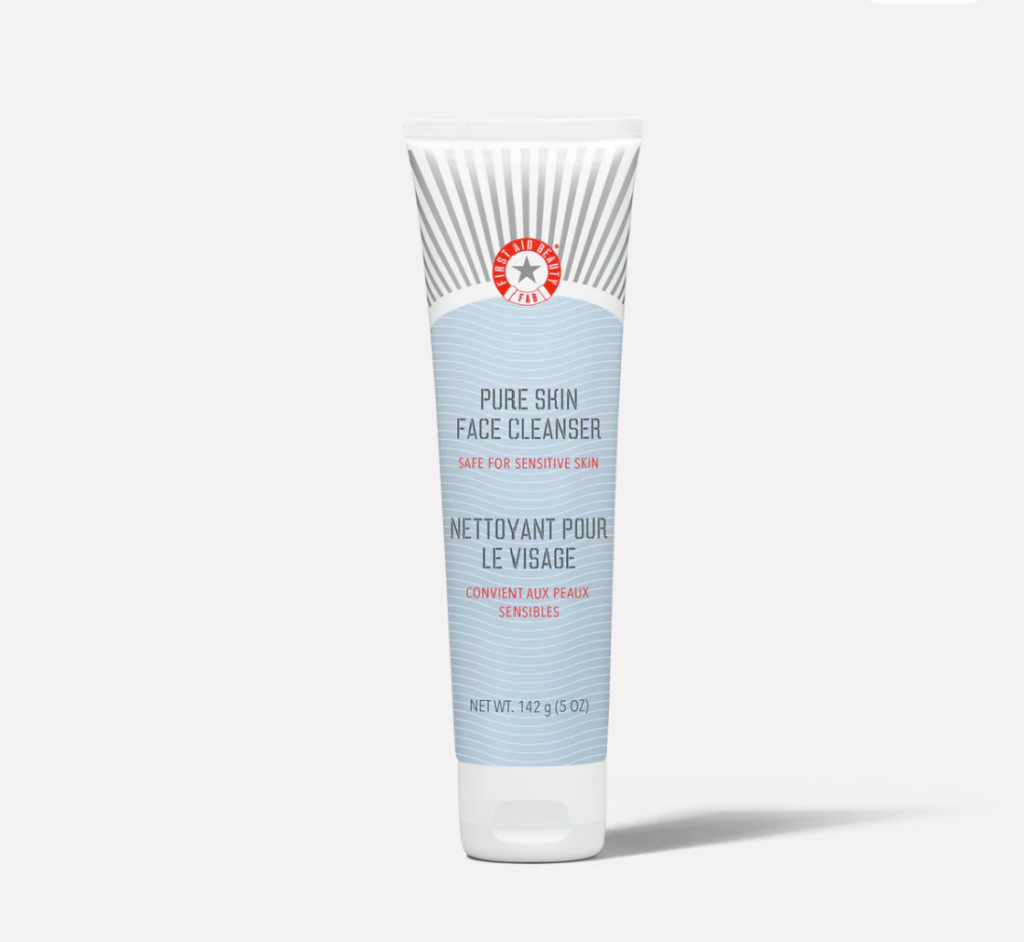
Why it’s good:
- Gentle and non-stripping formula: The cleanser is designed to effectively remove makeup, dirt, and impurities without stripping the skin of its natural oils or disrupting its pH balance.
- Contains soothing and nourishing ingredients like Aloe, Allantoin, and Glycerin. Aloe helps calm and soothe the skin, Allantoin is a skin-protectant that seals in moisture, and Glycerin is a powerful humectant that attracts moisture to the skin.
- The whipped texture transforms into a rich cream when blended with water, providing a luxurious and comforting cleansing experience.
Why it’s good:
- Four types of hyaluronic acid: The formula includes four types of hyaluronic acid, a powerful humectant that helps capture and retain moisture in the skin, ensuring a soft and hydrated complexion post-cleansing.
- Green tea extract: It features nourishing green tea extract sourced from Jeju Island and Boseong which is known for its high-quality green tea.
- Natural botanical extracts: In addition to green tea, the cleanser contains evening primrose flower extract and pine leaf extract, which contribute to the refreshing and rejuvenating effects on the skin.
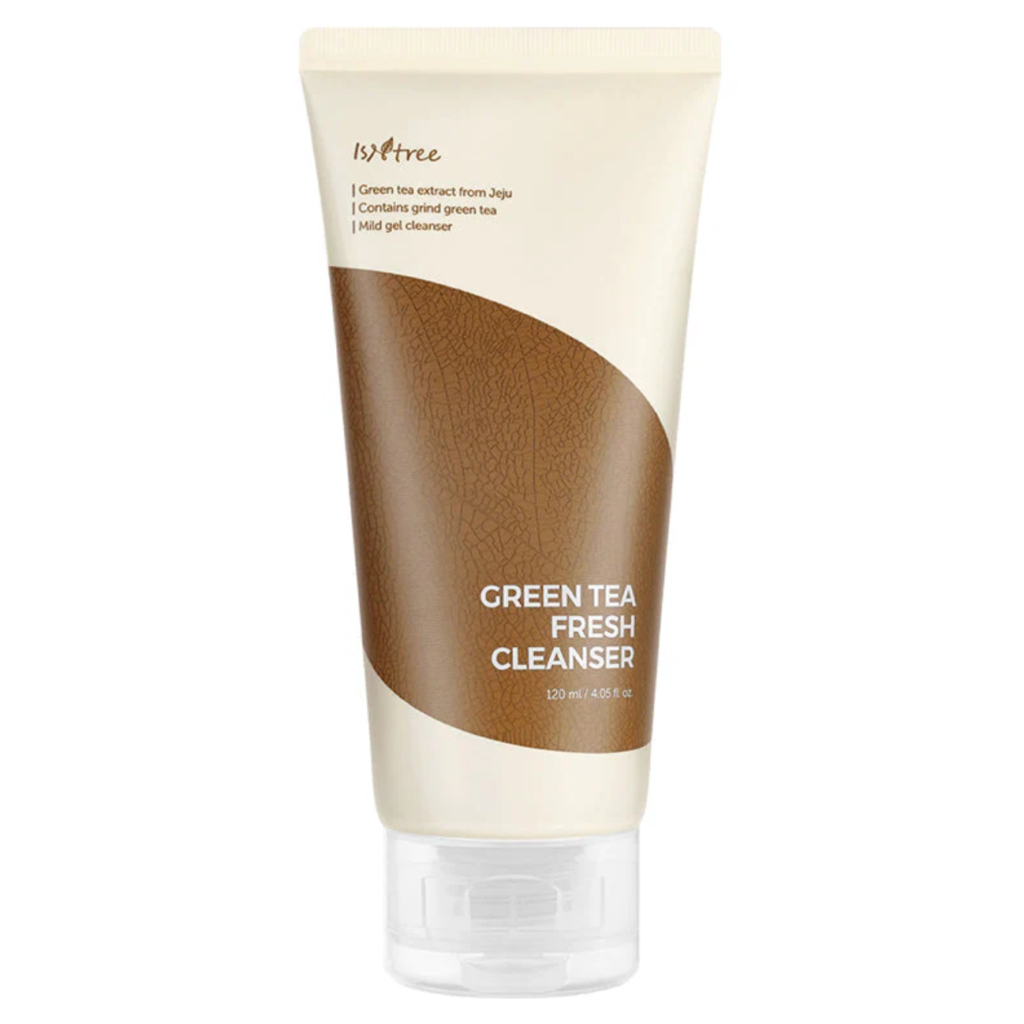
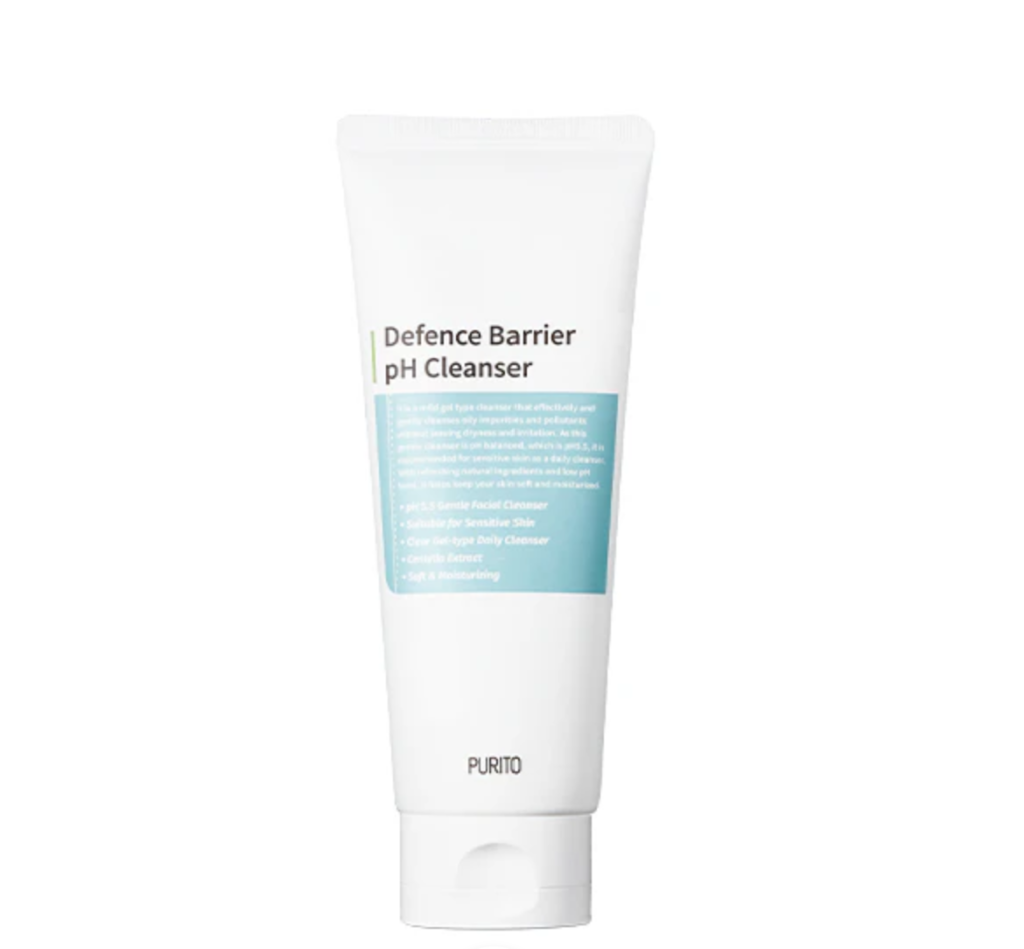
Why it’s good:
- Low pH formula: With a pH of 5.5, this cleanser is formulated to closely match the skin’s natural pH level.
- Moisturises without irritating or leaving a tight feeling thanks to:
- Tea tree leaf oil: Known for its antimicrobial properties, tea tree oil helps control acne-causing bacteria and soothes irritated skin.
- Centella Asiatica extract: Rich in antioxidants, this ingredient helps to moisturise and calm the skin.
- Free from harsh ingredients: The cleanser is free from alcohol, artificial fragrances, mineral oil, silicones, parabens, and sulphates,
There are lots of cleansers on the market, so choose whatever works for you.
2. Balance With Toners
Although optional, using a toner can provide significant benefits for your skin. Toners help balance pH levels, remove residual oils, and prepare your skin for subsequent products.
For this skin type, it’s best to choose toners with gentle, hydrating formulas. It should contain gentle exfoliating acids like Salicylic, Glycolic, and Lactic acid.
Avoid toners with high alcohol content or irritating ingredients like menthol or eucalyptus, and apply your toner after cleansing to refresh your skin and prime it for the next steps in your routine.
3. Hydrate With Moisturisers
For this skin condition you need a moisturiser that provides hydration without clogging pores or causing breakouts.
Gel-based moisturisers are an excellent choice. They’re lightweight, absorb quickly, and provide hydration without adding greasiness. These moisturisers often contain hyaluronic acid, glycerin and aloe vera.
What to look for in a moisturiser:
- Texture (lightweight and non-greasy)
- Non-comedogenic ingredients
- Hydrating properties
- Oil-control capabilities
Why it’s good:
- Lightweight fluid texture: With a light, fluid texture that absorbs quickly into the skin, it provides instant hydration without leaving a greasy or heavy feeling.
- Non-comedogenic and hypoallergenic: Meaning it won’t clog pores, and hypoallergenic, making it less likely to cause allergic reactions.
- Key Ingredients: Glycerin, a moisture-magnet, keeps skin hydrated and plump. La Roche-Posay Thermal Spring Water, rich in minerals and antioxidants, soothes sensitive skin. Niacinamide, Vitamin B3, strengthens the skin’s barrier and improves texture.
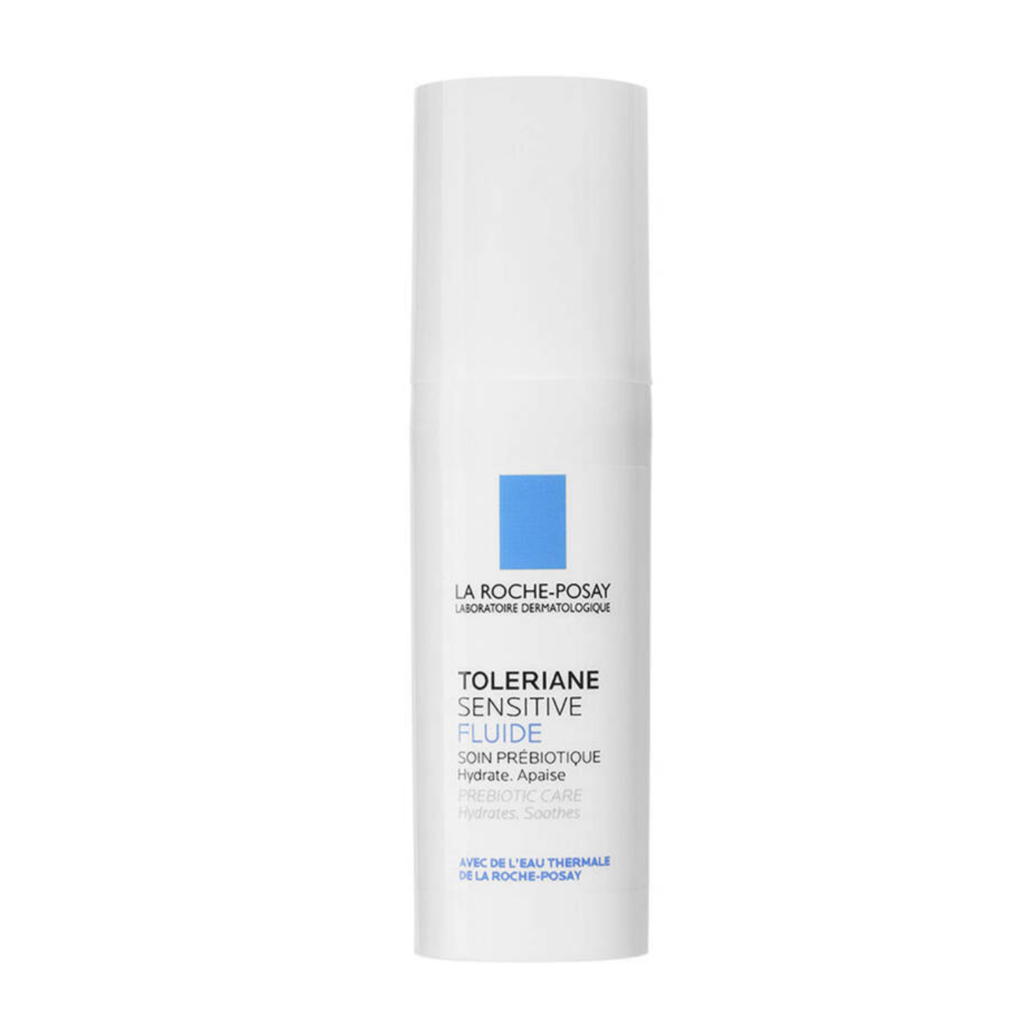
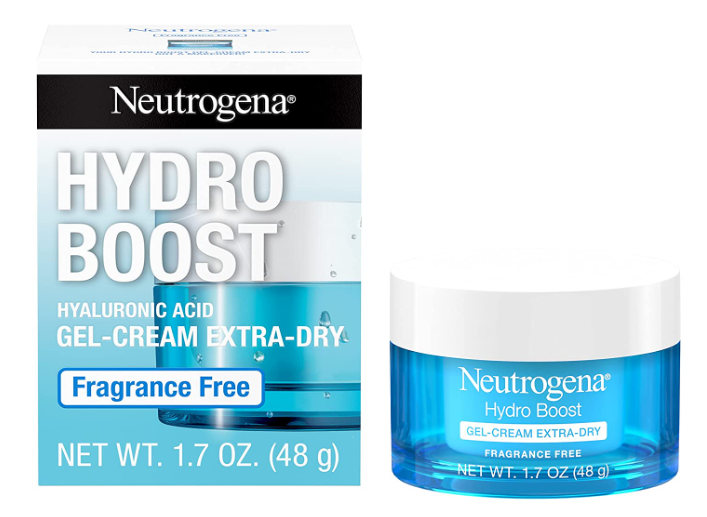
Why it’s good:
- Hydrating formula: Designed to provide intense hydration to the skin, leaving it feeling smooth, supple, and refreshed.
- Oil-free and non-greasy: The water-gel formula is oil-free and non-greasy, making it suitable for all skin types, including oily and combination skin. It absorbs quickly into the skin without leaving a sticky or heavy feeling.
- Lightweight texture: It has a lightweight, gel-cream texture that feels refreshing on the skin and is easily absorbed, making it ideal for use under makeup.
Why it’s good:
- Mattifying formula: It’s specifically formulated for oily skin, with a mattifying effect that helps to reduce shine and control excess oil production throughout the day.
- Double repair action: It aims to repair the skin barrier in two ways – by providing intense hydration and by helping to restore the skin’s natural protective barrier.
- Lightweight texture: The lightweight, fast-absorbing texture doesn’t leave a greasy or heavy feeling on the skin, making it comfortable to wear throughout the day.
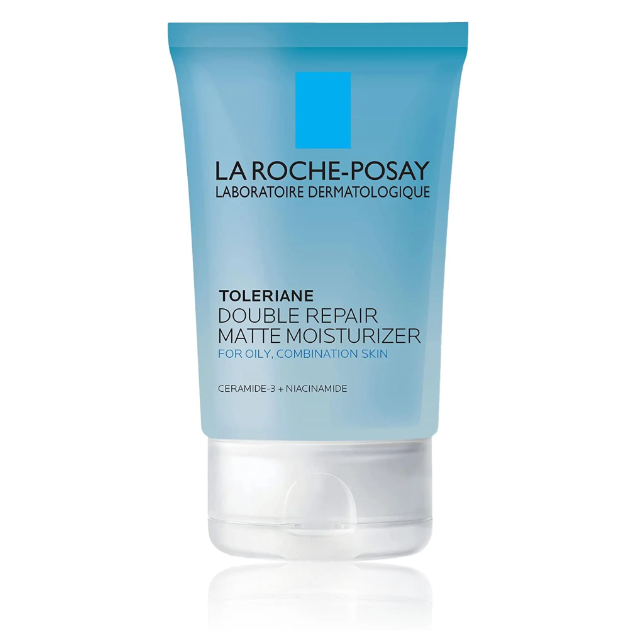
4. Protect Your Complexion
Protecting your skin is a crucial last step in your skincare routine. It’s essential to shield your complexion from environmental stressors and UV rays, which can exacerbate oiliness and dehydration.
Sun protection is non-negotiable.
Look for a broad-spectrum sunscreen with at least SPF 30. For oily skin, opt for lightweight, oil-free formulas that won’t clog your pores and apply sunscreen every morning as the final step in your skincare routine.
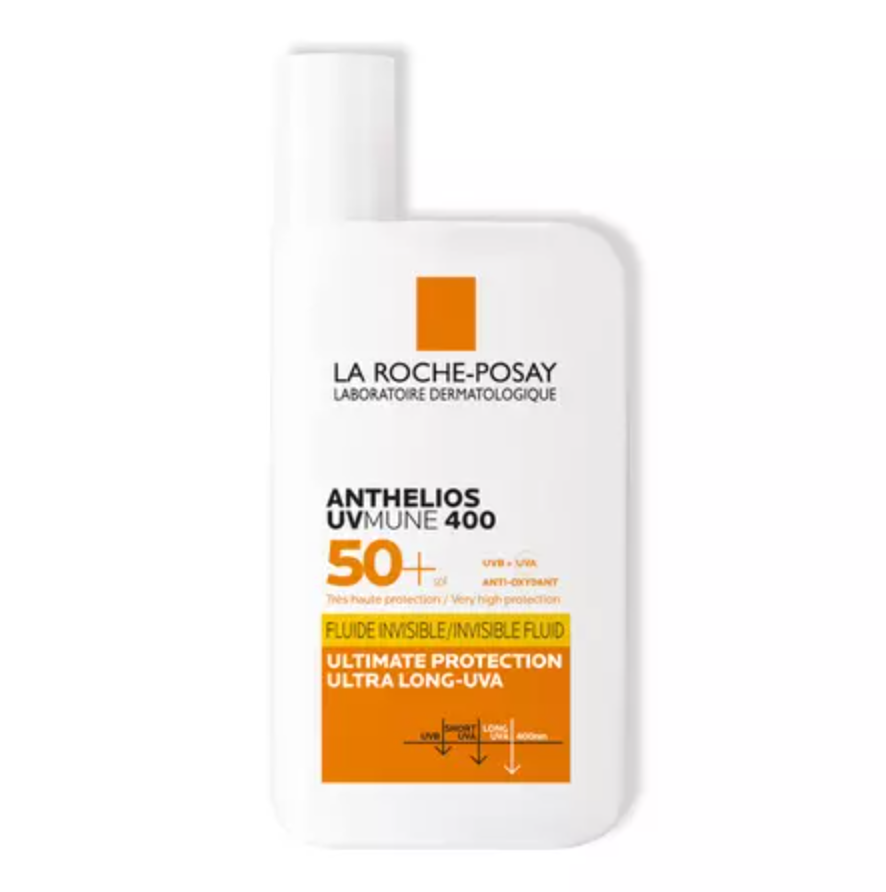
Why it’s good:
- Advanced UV protection: It features UVMune 400, a new generation broad-spectrum filtering system that offers advanced protection against both UVA and UVB rays, including long UVA rays.
- Ultra-resistant formula: Provides effective protection during swimming or sweating and is even sand-resistant.
- Invisible fluid texture: The sunscreen has an ultra-lightweight, invisible fluid texture that absorbs quickly into the skin without leaving a white cast or greasy residue.
Why it’s good:
- Hydrating formula: Is infused with ethically sourced algae for deep hydration, providing moisture to the skin while protecting it from UV rays.
- Can be worn under makeup: The lightweight, invisible finish of the sunscreen makes it easy to wear under makeup, without affecting the application or appearance of cosmetics.
- High SPF protection: With an SPF of 50+, the sunscreen offers very high broad-spectrum protection against both UVA and UVB rays.
- Easy application: The sunscreen comes in a drop applicator format, making it easy to dispense and apply the product evenly across the face.
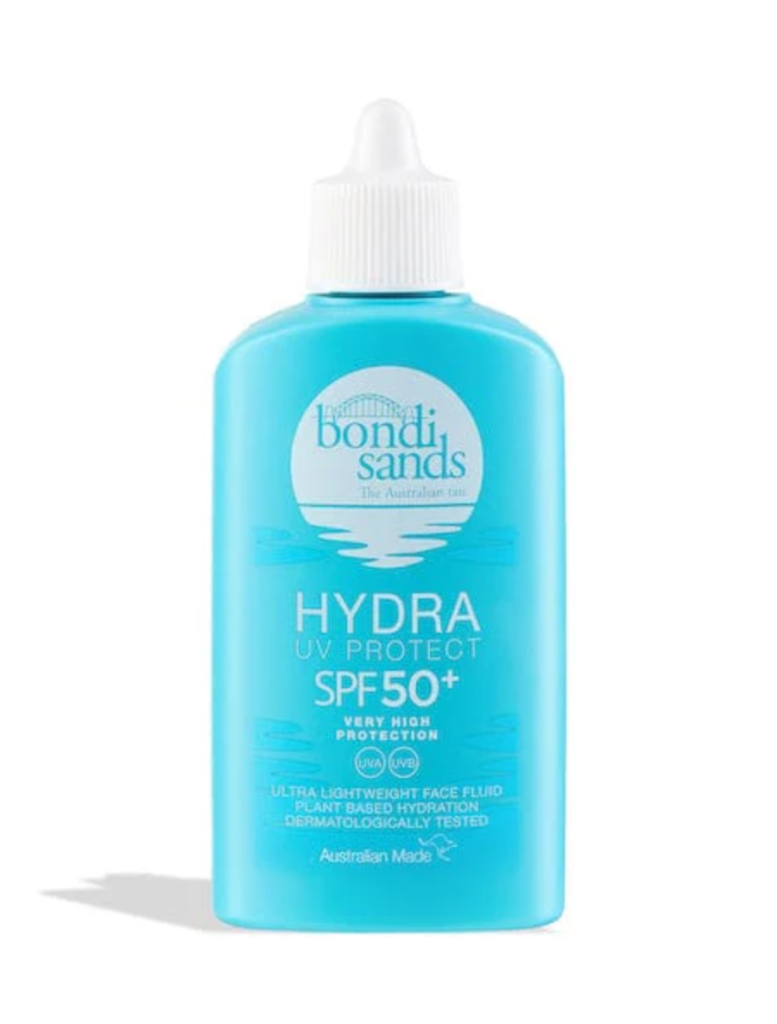
Tackling oily dehydrated skin requires a specific routine, but with the right routine, you can achieve a balanced complexion. Remember to cleanse gently, tone to balance, moisturise appropriately, and always protect your skin from environmental damage.
Keeping Your Skin in Top Shape
Apart from topical skin care such as moisturisers, serums and toners, your lifestyle choices also play a significant role in skin health.
First and foremost, stay hydrated! Make sure you’re drinking enough water throughout the day to keep your skin moisturised from the inside out. Dehydration can exacerbate the appearance of oily skin, so prioritise your water intake.
Aim for a balanced diet rich in fruits, vegetables, and omega-3 fatty acids. Manage stress through relaxation techniques and prioritise quality sleep each night. These habits contribute to a radiant complexion from the inside out.
Before You Leave
If this article has sparked your interest in managing oily-dehydrated skin, be sure to check out: Skincare Ingredients to Avoid for Dry Skin. And if you’re interested in learning more about sunscreens, such as what SPF mean or what is the difference between chemical and mineral sunscreens, we’ve got an article about that as well: Mineral Sunscreen: What You Need to Know!